In this article, you can find a list of the best journalism training programs in the USA.
The list is based on authoritative sources such as College Media Matters, US News & World Report, College Factual, College Magazine and USA Today and contains only accreditated institutions.
It should be mentioned that all the schools are accreditated by the Accrediting Council on Education in Journalism and Mass Communication (ACEJMC).
ACEJMC – it’s an agency that was created to evaluate journalism and media programs offered around the USA.
Keep in mind that it’s better to apply for accreditated programs as it guarantees you that you’ll be able to meet all the requirements and pass the test of nine standards.
Also. choosing such a program, you can be sure that you’ll get a good curriculum, excellent facilities, and resources.
Most students decide on their major based on their prospects of employment.
You need to make sure that you’ll be able to find a job before spending time and money on your training.
If you want to learn about employment prospects for journalists, we recommend you to visit journalismjobs.com.
This resource was founded in 1998 and now it became one of the most popular and the largest website for journalism job search.
All major media and internet companies such as ESPN, CNN, ABC, Discovery Channel, Fortune, Time Magazine and others use this service.
In our list, there is only one exception that has no ACEJMC accreditation – Ithaca College.
To get accreditation, colleges are obliged to provide a certain number of communications courses that students can take.
According to the standards, there should be at least 80 credits while Ithaca requires a minimum of 60 credits.
There, they believe that students need to pay more attention to the courses within their major.
Article Table of Contents
- 1 University of Missouri – Colombia
- 2 University of Georgia
- 3 Northwestern University
- 4 Syracuse University
- 5 Ball State University
- 6 Arizona State University
- 7 University of Oklahoma
- 8 University of Arkansas
- 9 Indiana University
- 10 Boston University
- 11 New York University
- 12 University of Florida
- 13 University of North Carolina – Chapel Hill
- 14 University of Maryland
- 15 University of Kansas
- 16 Ohio University
- 17 Ithaca College
- 18 University of South Carolina
- 19 Kent State University
- 20 Auburn University
- 21 Iowa State University
- 22 University of Texas – Austin
- 23 University of Nevada – Reno
- 24 University of Nebraska – Lincoln
- 25 Emerson College
University of Missouri – Colombia
Missouri School of Journalism is known as the oldest school that provides a journalism training program in the country.
It has its own unique method – Missouri Method – which is designed to provide students with hands-on training in real mass media such as NBC/CW, Jefferson City, Mo, and KOMU-TV.
Also, students can enroll in AdZou capstone class for strategic communication.
During these classes, students team up and make a research-based campaign for a real company.
The whole project is held under the directions of public relations, marketing, and advertising managers.
Moreover, students can participate in the work of Columbia Missourian that is a publication founded in 1908.
It is known for its numerous rewards and the newspaper often beat such known publications as St. Louis Post-Dispatch, Kansas City Star and Columbia Tribune.
It should be mentioned that the Missouri School aims to provide a multidisciplinary curriculum.
Entering a journalism training program there, you have an opportunity to make a choice of 30 areas of interest.
It’s achieved due to the great expertise provided by more than 80 faculty members.
Keep in mind that the Missouri School offers a wide range of programs and degrees.
Also, the college started the first Ph.D. in journalism in 1934 for those who are interested in a doctor of philosophy career.
Accreditation: North Central Association of Colleges and Schools/Higher Learning Commission
Tuition: $10,586 (resident); $25,198 (non-resident)
University of Georgia
Started in 1915 in honor of famous Atlanta journalist Henry Woodfin Grady, the Henry W. Grady College of Journalism and Mass Communication is one of the best colleges in the country.
Grady worked as an editor for the Atlanta Constitution and turned it into one of the most known publications in the country.
Henry W. Grady College aims to prepare effective and qualified professionals that will be working in mass media.
The college provides a number of degrees that include public relations, advertising, mass media arts, journalism, digital and broadcast journalism, publication management, visual journalism, and public affairs.
Also, there are master and doctoral degrees in mass communication and media industry research.
It should be mentioned that there are several prominent centers in the college that include the Peabody Awards which is the most prestigious award in digital journalism.
Among the students of this college, there was a bunch of worldwide famous individuals that won such awards as Pulitzer Prize, Emmy Award and others.
Accreditation: The Southern Association of Colleges and Schools Commission on Colleges
Tuition: $11,662 (resident); $29,832 (non-resident)
Northwestern University
Medill School of Journalism, Media, and Integrated Marketing Communications is one of the best colleges in the country from 1921.
There are various programs including journalism and marketing communications that offer not only great knowledge but also a bunch of techniques.
The school was started in honor of Joseph P. Medill who was a great editor and publisher as well as politician.
He is known as one of the Chicago Tribune owners and Chicago mayor.
The college is based on Northwestern University’s Evanston campus.
Medill College is known for its high standards and long-standing reputation.
Nowadays, college students are called a new generation of multimedia journalists with excellent skills.
Enrolling in the journalism training program in the college, you’ll be able to gain a bunch of important and useful skills as well as essential knowledge so you can perform your job perfectly.
Also, you can choose a program from a wide range of offers such as:
- business and money;
- health and science;
- social justice and investigative reporting;
- media strategy and leadership;
- sports media.
Graduating this college, you have an opportunity to start your career in Washington newsroom, the Associated Press and various national news agencies.
Accreditation: The Higher Learning Commission
Tuition: $48,624
Syracuse University
S.I. Newhouse School was founded on the basis of Syracuse University School of Journalism started by Dean Lyle Spencer in 1934.
Later, the Newhouse Communication Complex gain I.M. Pei building reward and in 2012 it was renovated with the support of Kari and Dick Clark Foundation.
At the moment, there are 8 undergraduate degrees in the college:
- advertising;
- broadcast & digital journalism;
- graphic design;
- magazine;
- online journalism;
- photography;
- public relations;
- and television;
- radio and film.
Speaking of master’s communications programs, there are 16 options available.
If you decide to enroll in Ph.D. program in this college, you can be sure that your education will be held in a stimulating environment.
Also, you’ll be able to learn such topics as media ethics and diversity, media sociology, new media, political communication, popular television, public relations or social effects.
Accreditation: The Middle States Commission on Higher Education
Tuition: $753 per credit hour (bachelor’s); $1,388 (master’s)
Ball State University
Ball State has a longlasting tradition of entrepreneurship and innovation that was started to boost the development of the city.
The Princeton Review named it one of the best universities in the Midwest.
Also, the Carnegie Foundation for the Advancement of Teaching classified it as the best research university.
Moreover, U.S. News & World Report recognized its first-year programs that were provided in the college for the last 10 years.
The graduates of the College of Communication, Information, and Media are well-qualified and many of them won 54 Emmy awards.
You should know that local journalism program is one of the best in the country.
Entering the Department of Journalism at Ball State, you’ll attend such courses as advertising, public relations, and journalism.
The college offers 5 Journalism majors and 2 Strategic Communication majors.
Ball State is known for its public relations graduate program that is the only one that was accreditated by the Public Relations Society of America.
You have an opportunity to get your MA in Journalism online and MA in public relations online, on-campus or both.
Also, there are four graduate-level certificates available at Ball State.
These programs are short and easy to complete.
Accreditation: The Higher Learning Commission
Tuition: $7,698 (Indiana residents); $23,472 (non-residents)
Arizona State University
The Walter Cronkite School of Journalism and Mass Communicatio is widely known as one of the best journalism programs throughout the country.
Enrolling in this program, you’ll be able to get your training from really qualified media scholars and awarded journalists.
Started on the base of Arizona State University’s Downtown Phoenix campus, this program uses an innovative approach for education which is nationally recognized.
Participating in full-immersion journalism training, you’ll be able to get plenty of practice guided by the best professionals.
If you started the undergraduate journalism program, you’ll be attending not only core classes but also a bunch of advanced classes and electives in public relations, broadcasting, reporting, digital media as well as media innovation and entrepreneurship.
Also, the college provides its students with numerous opportunities to build their skills and portfolio.
Recently, the college started to provide training programs for those reporters and journalists who want to start their career in sports field.
The BA in Sports Journalism lasts for 4 years and contains 120 credits that include such classes as advanced courses in multimedia sports reporting, data journalism, ethics and media law.
Accreditation: The North Central Association Higher Learning Commission
Tuition: $10,157
University of Oklahoma
The Gaylord College of Journalism and Mass Communication is in the list of the top 10 training programs for journalists in the country according to TVWeek.com and the Radio Television Digital News Association.
The college was started on the basis of the University of Oklahoma and is one of the largest there.
Till July 2000 it was a school but then it got a status of college and received a $22 million gift from the Gaylord family.
Gaylord College provides various training programs that include:
- Bachelor of Arts in Journalism that includes such majors as advertising, journalism, professional writing, public relations, and creative media production;
- Master of Arts in Journalism with majors in journalism, mass communication management, strategic communication or media arts;
- Master of Professional Writing;
- Ph.D. in Mass Communication that has courses in news and information, strategic communication or media arts.
If you decided to start your training at Gaylord, you can choose one of the spheres of interest such as advertising, creative media production, journalism, professional writing, and public relations.
Accreditation: The Higher Learning Commission
Tuition: $10,090 (resident); $23,476 (non-resident)
University of Arkansas
Having a long-lasting history, the University of Arkansas is one of the best educational facilities in the country.
At the very beginning, it was a small college with only three faculty members.
Their dedication and commitment made this University successful and helped it to develop and become one of the most well-known in the country.
Nowadays it has the highest graduation rate in the state and it continues growing constantly.
At the moment, the University of Arkansas provides training programs in more than 75 fields.
There are graduate degrees in the Sam M. Walton College of Business, the College of Engineering, the School of Law, and the Walter J. Lemke Department of Journalism.
There are three undergraduate programs that are Editorial/News Sequence, Broadcast Radio & TV Sequence, and Advertising & Public Relations.
If you decided to enroll in the Journalism program, you can take such electives as marketing, history, political science, English, sociology, psychology, anthropology, and art.
There are about 600-700 students that enroll in training annually.
Upper-division undergraduates of the Journalism Honors Program have an opportunity to start their journalistic research in the context of some other fields.
Also, you can enroll in an MA in Journalism there.
Also, you have an opportunity to choose a concentration such as Documentary Film, Strategic Advertising & Public Relations or some journalism topics.
Accreditation: The Higher Learning Commission
Tuition: $8,522 (in-state); $23,320 (out-of-state)
Indiana University
Any student of Indiana University’s Media School/Journalism knows about Ernie Pyle who was a talented journalist.
He worked during World War II and told stories about battles and events he had taken part in.
He was known for his excellent writing style and ability to present events in a vivid catchy manner.
He died during his stay in Japan on April 18, 1945.
He is one of the most famous students of Indiana University who attended its journalism course.
Being a student, Pyle was an editor of the Daily Student newspaper and later started his career at the LaPorte (Indiana) Herald.
This person is closely associated with IU because of many reasons one of which is the Ernie Pyle scholarships.
There you can gain a Bachelor of Arts in Journalism that contains such courses as:
- online journalism;
- broadcast news;
- photojournalism;
- advertising;
- media management.
One other significant aspect is that its Master’s degree is absolutely beneficial as it offers not only a bunch of great skills and experiences but provide you with a broad and deep understanding of your future profession.
There are highly qualified professors and internship, travel and workshop opportunities that will let you expand your expertise.
Moreover, you can choose to obtain a degree in one specific area or get a broader view of the whole sphere of mass media.
In 2015, the school opened Ph.D. programs in telecommunications, journalism, and film.
Accreditation: The Higher Learning Commission
Tuition: $10,388 (in-state); $33,740 (out-state)
Boston University
The College of Communication in Boston, Massachusettes provides its students with an excellent understanding of mass media, communications, and liberal arts.
During their training there, students develop proficiency in such skills as oral communication, writing, digital media skills, and visual literacy.
Also, enrolling in one of the offered programs, you’ll be able to get enough of hands-on experience to succeed in your career.
All programs are well planned and aim to develop skills in various areas such as television, film, radio, public relations, advertising, new media, journalism, and communication theory.
You should know that many graduates of this college are recognized specialists that won Pulitzer Prizes, Emmy Awards, and Clio Awards.
Entering a Bachelor of Science degree program at this college, you have a few specializations to choose from:
- Communication;
- Film & Television;
- Journalism.
If you look for some programs for undergraduates, there are options on Advertising, Broadcast Journalism, Communication Studies, Film, Photojournalism, Public Relations, and Television.
Graduated students can apply for some cross-disciplinary programs and gain a better understanding of advertising, journalism, media ventures, science journalism, and television issues.
Accreditation: The New England Association of Schools and Colleges
Tuition: $47,422
New York University
New York is one of the best places to pursue a career in journalism and there is one of the best options to obtain your training – Arthur L. Carter Journalism Institute.
Situated near Manhattan’s Greenwich Village, this college offers lots of opportunities and guarantees high-quality education provided by well-known professionals.
One other point is that New York itself is a great place to get not only some great experience but inspiration as well.
Also, it should be mentioned that most professors at NYU continue working as journalists which means that they know the industry perfectly.
Moreover, you should know that the journalism program there is treated as a significant aspect of the Istitute curriculum and social life.
Enrolling in BA degree, you can choose Media Criticism direction or Journalism direction which is concentrated on developing such skills as reporting and writing for printed media or reporting and production for broadcast media.
During your education, you’ll be able to learn how to do your job in order to meet the highest standards and expectations and become an exceptional journalist.
There is a bunch of classes that aim to develop your understanding of analytical methods and historical context so your writings and reports can influence the audience.
If you want to obtain your master’s degree, you have an opportunity to choose one of 10 directions to start your training.
Accreditation: The Middle States Commission on Higher Education
Tuition: $47,750
University of Florida
The University of Florida (UF) College of Journalism and Communications is known as one of the best colleges in the country.
The main reason for such recognition is an excellent curriculum oriented on both conceptual and theoretical instruction and skills development.
The College’s journalism program is nationally ranked as one of the best.
It was designed to provide the students with various practical and professional opportunities.
Being one of the top colleges for journalists, UF aims to provide a high level of professional and practical development for its students.
Also, the College one of the first schools in the country that started to use modern technologies in order to improve the quality of education.
There is a great computer network that helps students develop their skills in word-pressing, photography, data analysis, graphic design, and video editing.
If you want to want to get your bachelor’s degree, you have a bunch of options to choose from including advertising, journalism, public relations, and telecommunication.
Those who want to get master’s or doctorate degrees can enroll in mass communication training program.
Also, there are three Master’s degrees available online:
- Global Strategic Communication;
- Web Design;
- Online Communication and Social Media.
Also, there are The Brechner Center for Freedom of Information, the Knight Division for Scholarships, Career Services & Multicultural Affairs and the Jerry Davis Interactive Media Laboratory.
Accreditation: The Southern Association of Colleges and Schools Commission on Colleges
Tuition: $6,310 (in-state); Out-of-state add: $22,278
University of North Carolina – Chapel Hill
School of Media and Journalism, which is a part of the University of North Carolina, is a leader among educational facilities that provide a journalism training program.
UNC aims to open its research center to learn about new news models, discover some innovative digital media products.
According to UNC, it can help make reporters and editors’ work more effective due to new products and tools.
The School of Media and Journalism want to focus on developing numerous aspects of the digital transformation of news organizations and share the results with the community.
Starting your education at the School of Media and Journalism, you can choose one of nine offered directions that also include advertising and strategic communication.
Speaking of the Master of Arts in Mass Communication, there are 3 directions available – professional, mass communication and interdisciplinary health communication (IHC).
The list of specializations includes such options as:
- science and medical journalism;
- business and media;
- broadcast and electronic journalism;
- reporting;
- strategic communication;
- visual communication/editing/multimedia.
Moreover, there you can get your Ph.D. degree in mass communication that will allow you working as a college teacher, researcher or obtain some position in mass communication industries, market- or opinion-research firms, advertising agencies, government or business.
Accreditation: The Southern Association of Colleges and Schools Commission on Colleges
Tuition: $8,562 (resident of state); $33,644 (out-of-state)
University of Maryland
The Philip Merrill College of Journalism history started in 1949 when it was the Department of Journalism and Public Relations at the University of Maryland.
Nowadays, it’s known all over the world and considered as one of the best schools for journalists.
The college aims to prepare well-qualified professionals that can make the industry develop.
It means that the curriculum there is well planned.
Also, there is one of the oldest and most developed news operations that have bureaus in Washington, D.C., Annapolis and College Park.
Moreover, the students practice working on an evening TV news that is broadcasted by UMTV in Washington D.C. and online.
Enrolling in a bachelor’s degree program, you are going to spend one-third of your time learning about journalism principles.
There is a bunch of various journalism classes that designed to develop the concepts, skills, and fundamentals that you need to become a successful journalist.
You’ll learn how to work with various media platforms such as TV, magazines, the Internet, radio, mobile devices, and newspapers.
It should be mentioned that there is one of the best master’s degrees in journalism programs in the country.
It’s a full-time program that can be completed in a year.
After it, you can obtain a Master of Journalism degree (non-thesis) or Master of Arts degree (thesis).
If you want to continue your education and obtain a Ph.D. in Journalism Studies, you should know that it’s designed to prepare you to hold research on journalism to make the sphere develop and grow.
Accreditation: The Middle States Commission on Higher Education
Tuition: $4,997.91 per semester (resident); $15,571.91 (non-resident)
University of Kansas
Since 1948, the William Allen White School of Journalism and Mass Communications constantly gets its accreditation from the Accrediting Council on Education in Journalism and Mass Communications.
The first journalism class at this school was held about 130 years ago.
This school is known as a leader in innovative teaching technics that allows preparing students for journalist work in modern mass media.
According to the Fiske Guide to Colleges, it is one of the best college bargains in the country.
There are about 14 000 graduates that live in the USA and almost 50 other countries around the world.
Also, college students are constantly among the Hearst Foundation’s Writing Awards program winners.
In this college, you can enroll in such undergraduate programs as News and Information, and Strategic Communication.
Both offers allow getting a degree of a Bachelor of Science in Journalism.
Speaking of the Master’s degree, there are programs available at KU’s Lawrence campus.
During your training as a Master of Journalism, you are going to learn about real-world media issues including the use of media and critical thinking.
Also, you can enroll in the Master in Integrated Marketing Communication (MSJ-IMC) training program available at KU’s Edwards Campus.
This program was designed especially for working journalists who want to expand their knowledge and learn about integrated marketing communications
One other available option is MS/JD Journalism/Law Joint Degree.
Completing this degree, students can start their professional practice in medial, media law or law.
Also, there is a Ph.D. in Journalism and Mass Communication.
Accreditation: The Higher Learning Commission of the North Central Association of Colleges and Schools
Tuition: $10,448 (in-state); $25,731 (out-of-state)
Ohio University
Started in 1923 as a journalism course in the English Department, the E.W. Scripps School of Journalism has a long-lasting history.
When it was only started, Athens Messenger personnel often visited these classes.
There were 32 students that participated in the first class.
In 1983 it was named in honor of E.W. Scripps School who was a pioneer in the sphere of mass media and was able to create a newspaper group with almost 40 participants.
You can get access to E.W. Scripps Papers looking at Ohio University’s Special Collections in Alden Library.
The school offers a Bachelor of Science in Journalism degree that combines both professional skills courses and a strong liberal arts foundation.
There are two tracks available:
- news and information (encompassing broadcast news, news writing and editing, magazine journalism, and online journalism);
- strategic communication (encompassing advertising and public relations).
Also, you can apply for a Masters of Science in Journalism degree that contains 38 credits.
Three of these credits you’ll spend working on your professional project or thesis.
If you decide to enter the doctorate level, you can enroll in a training program supported by the School of Media Arts & Studies.
Accreditation: The Higher Learning Commission
Tuition: $547 per credit hour (Ohio resident); $989 (non-resident)
Ithaca College
Located in the central part of the New York state, Ithaca College was started in 1892 and was known as the Ithaca Conservatory of Music.
It was started by William Egbert as a mean to renovate violin popularity and traditions in the USA.
After the President’s role was succeeded by George C. Williams, the school developed significantly and became well-known.
At the same time, elocution and rhetoric classes were started.
It was named as one of the best film schools in the country by the famous Hollywood Reporter.
According to the Hollywood Reporter, the Roy H. Park School of Communications significantly improved its graphics equipment, cameras, and studio control rooms.
There are two Bachelor of Arts and four Bachelor of Science programs offered at the Roy H.Park School of Communications.
Also, you can enroll in a training program for a Bachelor of Fine Arts in Film, Photography, and Visual Arts.
The school offers Master’s degree that can be got online in 2 years.
This selective, executive-style program was designed for communications professionals who want to improve their skills and design their future.
Only 10 people maximum are accepted to this program every year.
It gives students an opportunity to get all possible advantages of their education.
Among current students, there are representatives of the Massachusetts Institute of Technology (MIT), Showtime Networks, 3D Systems, the MLB Network, Paramount, Zazzle, BET Networks, and Edleman.
Accreditation: The Middle States Association of Colleges and Schools, Commission on Higher Education
Tuition: $40,658 or $1,355 per credit hour
University of South Carolina
Founded in 1971 and supported by Ambassador Walter H. Annenberg, the Annenberg School for Communication and Journalism is a part of the University of Southern Carolina.
This school is known for its multidisciplinary approach to such courses as journalism and communications.
Also, it pays special attention to the country’s and international entertainment, media and technology industries and makes sure students can access it.
There are about 17 000alumni that are well known in the communication sphere.
There are such personalities as a Long Beach Mayor, Pulitzer Prize winner, the 1st female president of the University of Connecticut and one of the influential people named in the Forbs’ “30 Under 30” list.
Those who decided to enroll in a bachelor’s degree in communication will be able to learn such disciplines as communication theory, intercultural and interpersonal interactions, and the role of messages in various media such as entertainment, sports, politics.
There are three bachelor’s degrees available:
- Print & Digital Journalism;
- Broadcast & Digital Journalism;
- Public Relations
During their training, students will be able to develop such skills as reporting, writing, ethics, multimedia storytelling, and production journalism.
Public Relations students are going to learn some aspects of advocating for a cause, brand, campaign or company.
Moreover, the university offers 8 master’s degrees and seven Ph.D. degree programs.
Accreditation: The Western Association of Schools and Colleges
Tuition: $24,732 per semester
Kent State University
The School of Journalism and Mass Communication (JMC) is one of Kent State’s College of Communication and Information schools.
It should be mentioned that it is the only school in Northeast Ohio that has accreditation in journalism and mass communication.
According to intercollegiate journalism competitions, JSM has an impressive outlook and excellent basis to preparer one of the best professionals in the industry.
Also, JMC had incredible results in the William R. Hearst Foundation Journalism Awards in 2014.
It gains the fourth place in the Hearst Intercollegiate Photojournalism competition which is one of the best results in the history of the school.
Moreover, it was ranked 10th in the national writing competition.
There are lots of students that were in the top 10 winners of the television features competition, personality/profile-writing competition, photojournalism news & features competition, and feature-writing competition.
Students have an opportunity to participate in a variety of majors in numerous subjects such as electronic media production and news journalism.
After completing majors program, students can apply for a Bachelor of Science Degree.
Those who look for undergraduate majors can choose from:
- Advertising;
- Digital Media;
- Journalism;
- Public Relations.
In order to complete any major, students are obliged to enroll in internships in their field.
Entering a graduate level, you can enroll in one of three programs that include Public Relations, Media Management, and Reporting and Editing.
The master’s degree program contains at least 36 credits that include 3 hours for non-thesis option and 6 – for the thesis option.
Accreditation: The Higher Learning Commission and a member of the North Central Association
Tuition: $10,012 (in-state); $18,212 (non-resident)
Auburn University
Located in Alabama, Auburn University was founded in 1856.
The first journalism students entered the university in the 1920s’.
In 1934, it became a major and only 40 years later the journalism department was created by the university alumnus professor Emeritus Jack Simms.
Speaking of the Department of Communication, it was started in 1949 as the Speach Department.
Later, in 1970, it was renamed and became the Department of Speech Communication.
Its current title it got only in 1985.
Nowadays, the school is known as the School of Communication and Journalism.
Those students who want to get their Bachelor of Arts degree can choose one of the provided options:
- Communication;
- Journalism;
- Media Studies;
- Public Relations.
After completing your training in journalism, you’ll for sure be able to start your career in various media outlets such as TV stations, magazines, radio networks, newspapers or other communication companies.
There are 10 options for those who want to get a bachelor’s degree in journalism including investigative and broadcast journalism.
The School of Communication and Journalism’s Graduate Program in Communication includes 30 credits on such disciplines as public relations, human communication, and media studies.
All programs are designed to provide students with such essential skills as critical and analytical thinking.
It is achieved by lots of practice and research as well as theory integration.
Accreditation: The Southern Association of Colleges and Schools
Tuition: $10,424 (in-state); $28,040 (out-of-state)
Iowa State University
The Greenlee School of Journalism and Communication that is located in the state of Iowa, is one of the oldest school for journalists in the country.
It was established in 1905 and since then 5 school alumni won Pulitzer Prizes which is the highest rate in the state.
Also, this school is known for its internship program that is called as the most rigorous and professional and requires 400 credits for advertising and media outlets.
Among the other specifics of this school, there should be named the biggest number of student organizations, award-winning independent media maintained by the college students.
The Iowa State Daily and Ethos magazines are among those media and the first one was named as the best student newspaper in the country in 2008.
You can enroll in the advertising major if you want to work in industry or business.
If you decided to take journalism and mass communication as your major, you are going to be working with aspects related to information and news.
If you want to help companies and organizations to build strong bonds and interact with each other, you should consider enrolling in an undergraduate degree in public relations.
Those students who participate in a graduate program will be able to get a bunch of theoretical and practical knowledge that is required for a successful career in the media sphere.
There are often such events as Researching or Teaching Fridays during which real media professionals and best researchers share their knowledge and expertise with students.
Accreditation: The Higher Learning Commission
Tuition: $3,324 per semester (resident); $9,884 (non-resident)
University of Texas – Austin
The Department of Journalism in the College of Arts was founded more than 100 years ago.
In 1966, the School of Communication was started and now it provides training in four spheres:
- speech;
- journalism;
- radio-television-films;
- advertising.
The school’s newspaper Texan is known as one of the best student newspapers.
From 1900 to 1907 it was a weekly edition but later it was transformed into semi-weekly.
In 1913 it was renamed and became known as a Texan Daily.
8 years later the college administration decided to create Texas Student Publications, Inc. and put it in charge of various student publications such as newspapers.
Nowadays the college aims to provide students with all the necessary skills and knowledge so they can become leaders in the sphere.
The curriculum contains such disciplines as a print, broadcast, photographic and online journalism.
After moving to Belo Center for New Media, the college also launched a new curriculum for undergraduate students.
If you decide to enroll, for example, in a sports journalism program, you can be sure that you’ll obtain excellent reporting and writing skills and knowledge.
It will let you obtain a better career in the future as soon as you’ve completed your training.
Students that want to get their Master’s or Doctoral degree, can enroll in special training courses at the school.
You should consider enrolling in The Master of Arts Degree in case you want to become an effective journalist and work with some theoretical issues.
After the Master of Arts Degree, you’ll be able to apply for academic, professional or research careers.
Accreditation: The Southern Association of Colleges and Schools Commission on Colleges
Tuition: $4,832 per semester (resident); $17,108 (non-resident)
University of Nevada – Reno
The University of Nevada started its first journalism course as a part of the English department back in 1921.
A year later, professor Alfred Higginbotham started to tech 2 courses and later added two more.
The first 11 graduates of journalism classes were pictured in 1924.
During its history, the Reynolds School of Journalism prepared six journalists that won Pulitzer Prize.
Moreover, there is constantly a bunch of students that win national competitions in various spheres such as advertising, photo and print journalism.
There are about 500 of minor and major students as well as 8-14 master degree students.
The Reynolds School of Journalism and Center for Advanced Media Studies work together so students can have a global conversation about various media and communication issues.
If you are in your freshman years, at the Reynolds School of Journalism your considered as a pre-journalism major.
To be admitted as a major, you need to enroll in some core classes.
Students can enroll in training programs in:
- public relations;
- strategic communications;
- advertising;
- broadcast journalism;
- online news writing;
- data journalism;
- social media management.
To apply for one of the programs, you need to complete a core curriculum first.
If you want to enter the Reynolds School master’s degree in journalism, you should know that the program lasts for 18 months.
Accreditation: The Northwest Commission on Colleges and Universities
Tuition: $6,639 per semester (in-state); $20,549 (out-of-state)
University of Nebraska – Lincoln
The first journalism class at the University of Nebraska was held in 1894 by Will Owen Jones.
His classes were a mixture of academic excellence and professional expertise, and this tradition is still kept nowadays.
Later Jones worked as an editor of the Nebraska State Journal.
Journalism courses developed constantly and with the support of professor Miller Moore Fogg, the School of Journalism was started in 1923.
Nowadays, it’s one of the best colleges for journalists in the country and also it’s a part of the Carnegie-Knight Initiative on the Future of Journalism Education.
Those who want to apply for major programs can choose from Advertising and Public Relations, Broadcasting and Journalism.
After completing advertising major programs, students have an opportunity to find some career offers provided by the best public relations and advertising agencies.
If you’ve decided to choose a broadcasting program, you have an opportunity to get some unique experience as well as a wide range of industry contacts.
Those students who completed their journalism training program will be able to have a successful career at best media and news production companies, small businesses and non-profit organizations.
There is also the Master of Arts in Journalism and Mass Communications which is divided into three areas:
- Integrated Media;
- Media Studies;
- Professional Journalism.
Accreditation: The Higher Learning Commission of the North Central Association of Colleges and Schools
Tuition: $219.75 per credit hour (resident); $692 (non-resident)
Emerson College
Emerson College in Boston was founded in 1880.
It was named after one of the college presidents Charles Wesley Emerson.
He was a great preacher, orator, and teacher.
At the very beginning, it was a small school of oratory in New England but now it’s a big college with a worldwide reputation.
This college is known for its ability to respond to the latest trends and demands in the educational sphere.
It should be mentioned that Emerson College was the first one in New England that had an educational radio station.
Now the Princeton Review became the best student radio in the country.
Also, Emerson College was one of the first educational facilities that started an undergraduate program in broadcasting.
Nowadays, 3 757 undergraduates and 758 graduate students from almost all states and about 60 countries attend this college.
Undergraduate, graduate and professional studies programs at Emerson College include such options as:
- communication;
- communication sciences and disorders;
- journalism;
- visual and media arts;
- performing arts;
- writing, literature, and publishing.
This college can be proud of its students as there are famous professionals and recognized scholars among the students.
If you want to start your undergraduate training, you have 22 options to choose from including Bachelor of Science, Bachelor of Fine Arts, and Bachelor of Arts.
Those who decided to enroll in a graduate training program can apply for one of 12 available options that depend on their major.
Finally, there is an opportunity to obtain a Master of Science, Master of Fine Arts, or Master of Arts.
Accreditation: The New England Association of Schools and Colleges
Tuition: $36,650/year

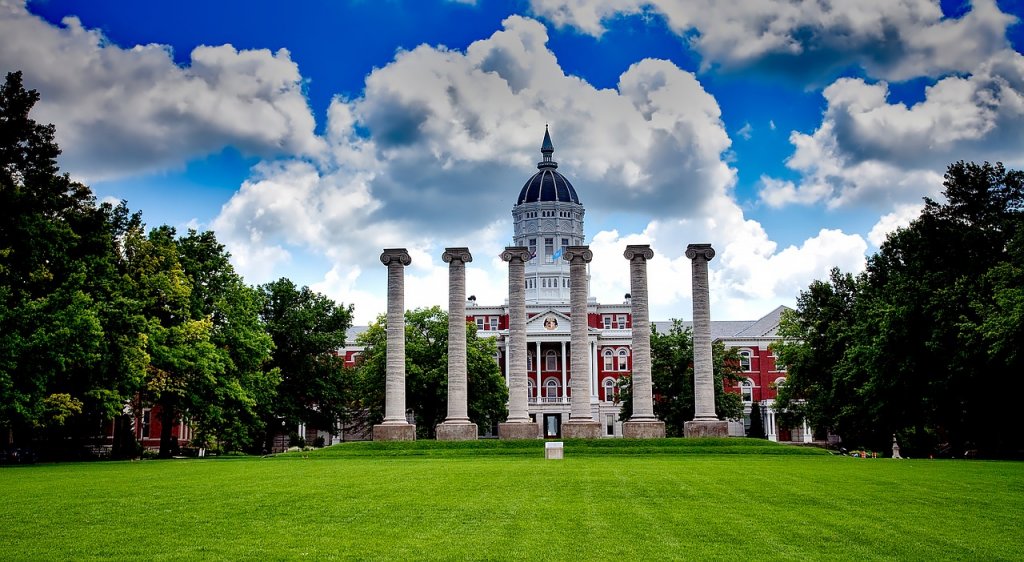



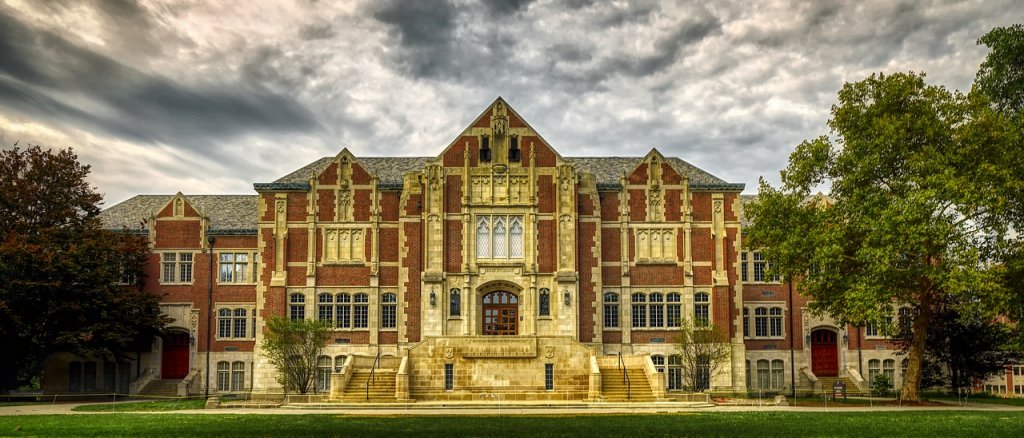
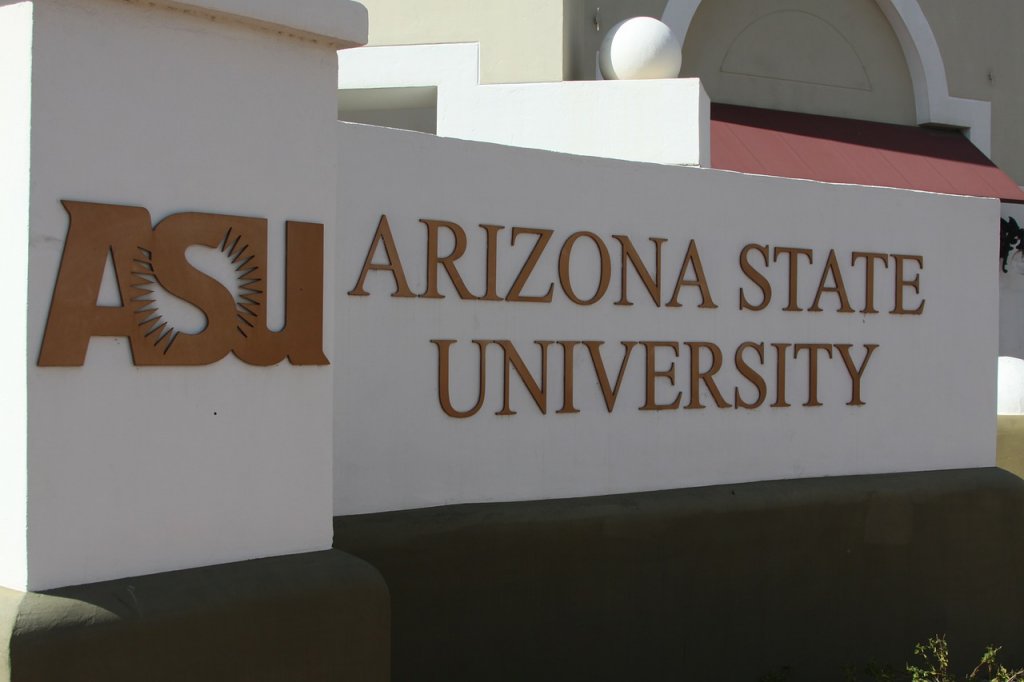



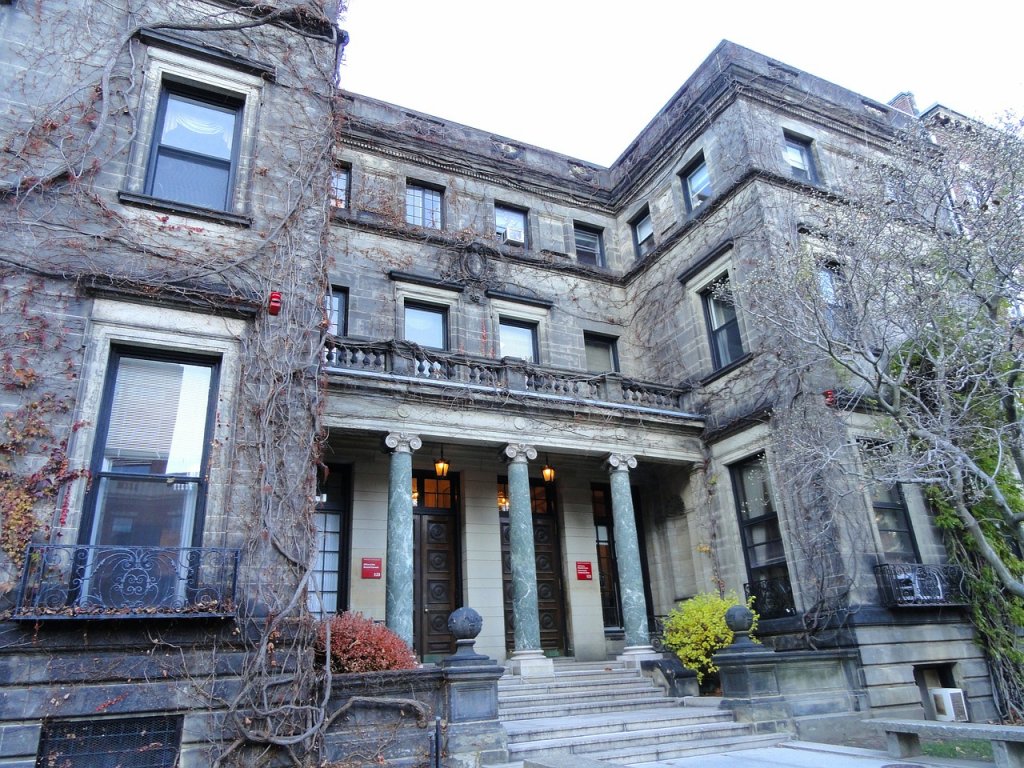



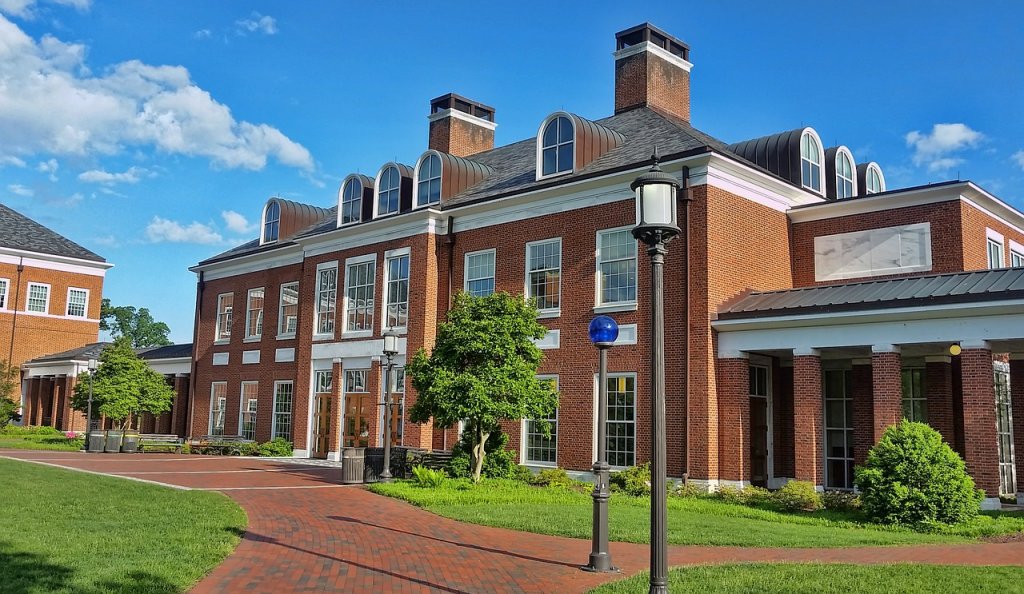




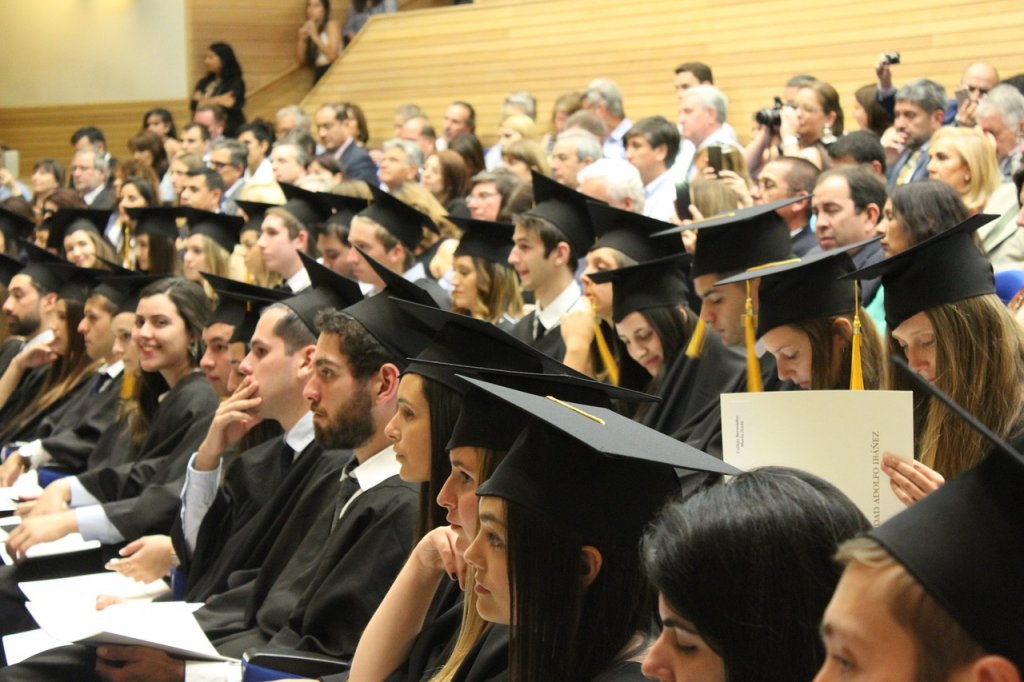






Yes nick, go be a mechanic…with apologies to all the great mechanics out there.
yall the schools are just teaching you to write T-T people are just currupt- it isn’t the colleges fault
I am not sure about this. When I think of journalism, I think of men and women out there uncovering the facts and truth. People who have come from these colleges and say they are journalists do nothing but spread lies and hate. I can’t even stomach the news anymore. I think you are far better off going to a small local trade school or community college vs a university.
Please identify an example of someone who has come from these college spreading a “lie.” Thanks so much!
I’d assume they’re refering to the fact that our country is insanely polarized and most journalists just say whatever the audience wants them to anymore. Logic out the window. I’ve definitely read some contradictory information in leading publications like the New York Times and have seen some incredibly misleading information on Fox news.